Hands-On – Kari Voutilainen Vingt-8 ISO with a different way to read time
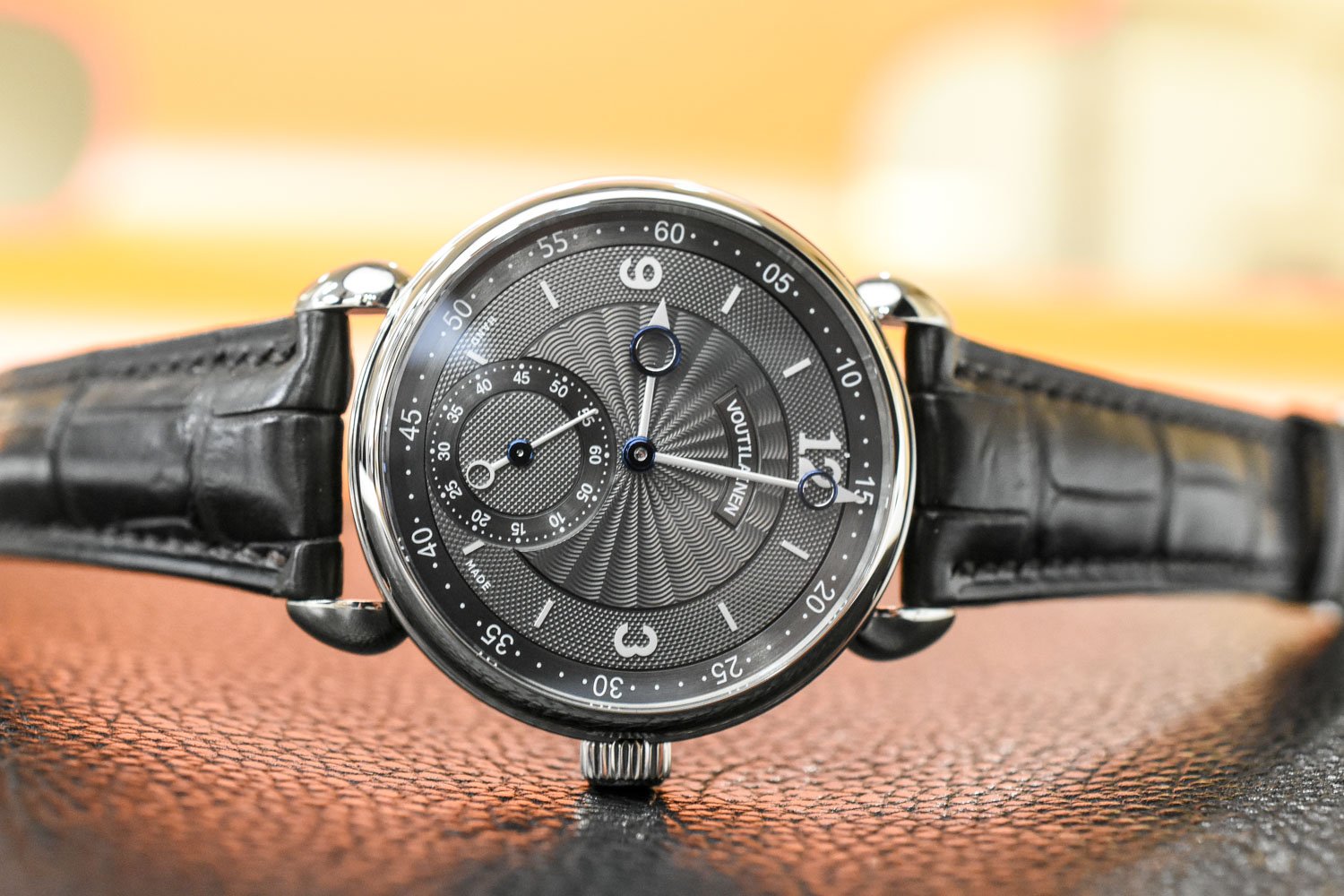
Over the years we got to know Kari Voutilainen as the humble Finnish watchmaker, who creates the most exquisite hand-finished timepieces. In the entire world of watchmaking there are only few who deliver such a level of “finesse”. Kari Voutilainen’s latest timepiece is not simply a design feat, and also not a special model made in collaboration with a master craftsman (like for instance this one made in collaboration with the legendary Japanese lacquer studio Unryuan). What we have here is Kari Voutilainen’s signature timepiece, the Vingt-8, with a unique way to indicate time. It’s called the Vingt-8 ISO and the entire idea behind it is rather unique, and is mean to create a more intimate and reflective relationship with your watch… (yes, we’ll explain it)
Now at first glance you might recognize a ‘normal’ Vingt-8 (not that there’s anything normal about a Voutilainen Vingt-8.) After some admiring, drooling if you will, staring at that beautifully finished movement, you find out that the hour hand and minute handhave not moved in a way you would expect, but you can also not pinpoint what exactly is different. Let me start by pointing out the outer ring that surrounds the dial. That’s where to read the minutes, indicated by the minute hand… (sounds very normal, but it’s not, believe me)
While that sounds perfectly normal, the reality is that the hour hand and minute hand have a different relation, or different angle towards each other, than on any other watch. Later more about that… The idea stems from Daniel Kahneman, who is a world renowned psychologist and Nobel Prize laureate in economics. He is notable for his work on the psychology of judgment and decision-making, as well as behavioral economics. In his work he described two systems, that also apply on read time on a wrist watch (or clock for that matter). Usually telling time by looking at a watch is a result of a System 1 activity: a glance suffices because the ‘code’ is so familiar that in an instant you know the time without having to think twice. The position of the hands is immediately recognized and translated into the time, without looking at the numbers next to the hands.
“Kahneman’s empirical findings challenge the assumption of human rationality prevailing in modern economic theory.” quote wikipedia
However, there’s also a second system, which implies that you have to take a bit more time and actually read the time. Because you can not read the time, you have to switch to System 2. This creates a more intimate and reflective relationship with the watch and it takes a few seconds now to know the time. So yes, it takes more time, however you now know the time better, because you read the time with more attention. Enough background, now back to the Vingt-8 ISO…
I told you about the more intimate relation that you get from reading time on watches that cannot be read according to Kahneman’s System 1. Think for instance URWERK or Hautlence. You always need to look twice and with attention, in order to really see and know the time. System 1 stands for being able to recognized the position of the hands at a glance, and translating this visual imprint to knowing the exact time. Now System 2 is about watches that require you to look twice… At the above photo of the Vingt-8 ISO you see that the hour hands points towards the 9, or a bit above 9 to be specific. This means it’s a bit after 9 o’clock. Again, so far, so good. When reading time according to System 1 you would think it’s 9:05 and you might wonder why the hour hand is not closer to the 9, and has instead moved to approx. 1/3 between the 9 and 10 o’clock position. That’s because the Vingt-8 ISO is not a normal 3-hand watch. The time on the Vingt-8 ISO pictured above is 9:18h.
How to read time on the Voutilainen Vingt-8 ISO?
The answer is actually very simple, namely by looking at the hands and the numerals they point to. The hour hand is easy, and can be read according to Kahneman’s System 1 (meaning exactly how you would expect it to indicate the hours), however the minute hand does things differently. The ring around the dial rotates, and makes one full rotation in 12 hours. Similar to the hour hand. The minute hand points to the actual minutes on the outer, rotating, circle. On the watch pictured below the time is 1:31h.
When you take the hour hand as starting point, the minute hand is in an almost 180 degree angle. That is not logical when you read the time on a ‘normal’ watch. On a normal watch the minute hand would point to the 6 o’clock position when the time is 1:31h. Here the outer minute ring rotates, and in such way that the angle between the hour and minute hand makes sense in a different way than we’re used to. The angle of the minute hand is exactly 31 minutes ‘later’ than where the hour hand is. In other words, the minute hand indicates the minutes relative to the hour hand.
When you’re fully aware of that, you actually do not need the outer minute ring for an estimate of the time. Though the outer minute ring is essential for precise reading. What does this all mean for the position of hands?
- at the full hour, the minute hand overlaps the hour hand.
- at every half hour, the minute hand and hour hand are 180 degree angle, or exactly opposite.
- the minute hand’s angle towards the hour hand, is similar to the minute hand towards the 12 o’clock position on normal watches.
After some practice it becomes quite easy to read the time, although you certainly need to eliminate your instinct that comes along with System 1 type of reading the time.
Dial and hands
Kari Voutilainen is well known for the stunning engine-turned dials. More brands are using Voutilainen’s dials these days. The machinery for making these hand engine turned dials, so called rose engine lathes, are pretty rare and Kari owns a few. More importantly, the art, or craftsmanship, of making these dials is even more rare and only a few truly master this technique.
The dial is made in silver, as said engine-turned by hand, and comes with applied gold hour markers. Kari Voutilainen offers his clients a truly bespoke dial, and they can choose the desired pattern and can even add translucent enamel in a choice of colours.
The hands gold are entirely made by hand, and the long shaft, the circle and small triangle/arrow are all cut and crafted by hand. After cutting the shape, all parts will be meticulously polished and beveled by hand. After this, the small circle is heat blued, and soldered to the hand’s shaft, and to the triangle/arrow on the other side. Making such a set of hands by hand is very time consuming, and easily costs a few days of work!
Case and strap
The case is kind of a signature for Voutilainen’s watches. The round case, always executed in precious metals, always feature the rounded ‘teardrop’ lugs. The three-part round case, in 18K white gold, measures 39.00 x 12.30mm. Although the Vingt-8 is not exactly as thin as you would expect from a dress watch, I can say from experience that it wears very comfortable and elegant, and can probably be compared to for instance the Laurent Ferrier Galet case in terms of elegance and comfort. On my wrist, pictured below with the black dial and red numerals, is an extra large 44mm Vingt-8 ISO in platinum. The regular size, here with a silver dial, can be seen on the wrist of Monochrome’s managing editor, Brice Goulard.
On both side of the case is a sapphire crystal and the one protecting the dial comes with anti-reflection treatment. Kari Voutilainen does not own an alligator farm in Môtiers, Switzerland, so the hand sewn alligator straps are one of the few parts of the watch that are not made in-house. The tang buckle matches the material of the case.
Movement calibre 28
Now we come to the part that probably all Kari’s clients enjoy most: the beautifully finished movement. Where Kari used to rely on N.O.S. Peseux 260 ébauche that was finished to spectacular levels of yummie-ness. Early 2011 Kari Voutilainen introduced his entirely in-house developed and manufactured movement, calibre 28 or vingt-8. And again the finishing is just stellar, and that’s just one of the reasons why there a waiting list for Kari Voutilainen’s timepieces.
The main plate and bridges are made in German silver, and all the finishing (pèrlage, côtes de Genève, beveling and polishing) is of course done by hand. All wheels of the gear train are in rose gold. The single main spring provides 65 hours of autonomy, when fully wound, and that might sound like a lot for a single main spring. However when you take into account that the new in-house calibre 28 features a special self-developed escapement that is very energy-efficient and does not need any lubricating oils.
The balance gets direct impulses from the two escapement wheels; a patented system developed by Kari Voutilainen. The balance is held in place by a superbly finished balance bridge. Inside the balance vibrates the free sprung balance that comes with a Breguet overcoil and an inner Grossmann curve. The balance, equipped with rose gold timing weights, and vibrating at 18,000 vph, has a very large diameter of 13.60 mm.
The watch is finished to the highest standards. The surfaces of pinions and wheels are completely flat and highly polished to exceptionally uniform tolerances. All finishing work on the main plate and bridges is done by hand to achieve the highest possible levels of surface finish. Screws and all steel parts are finished and polished by hand.
Final Thoughts on the Voutilainen Vingt-8 ISO
This is such a sublime piece that words to describe the used materials, the finishing and other technical specifications come short. Kari Voutilainen’s work is of the very highest level you can imagine. I think it’s very impressive that Kari Voutilainen developed his own movement, and now come with a new complication based on his Calibre 28.
The movement’s escapement is extremely efficient and requires much less energy than traditional escapements, and therefore it benefits in terms of longevity and stability in day-to-day use. The design and philosophy of the movement combines respect for longevity and precision with classical watchmaking tradition. That’s maybe not the best marketing slogan to sell rather costly watches, however for those in the know this works just fine.
The complication might also not be something for the crowd, however for anyone who sincerely appreciates his (or her) timepieces, it will be a welcome distraction. Not looking at your watch to read the time in a fraction of a second. No, Kari Voutilainen created a watch that will make you look twice, or at least a bit longer than a fraction of a second. Whether this, or the spectacular hand-finished movement, creates a strong bond between the owner and the watch is a given. Most importantly though, is that you can enjoy both the front as well as the back (or inner works) of the watch. And it won’t be a punishment to look at it longer than a fraction of a second!
Starting price for a Vingt-8 ISO is just under CHF 90.000 Swiss Francs and the precise price of course depends on the choices you make for the dial and material of the case and clasp.
More info: www.voutilainen.ch

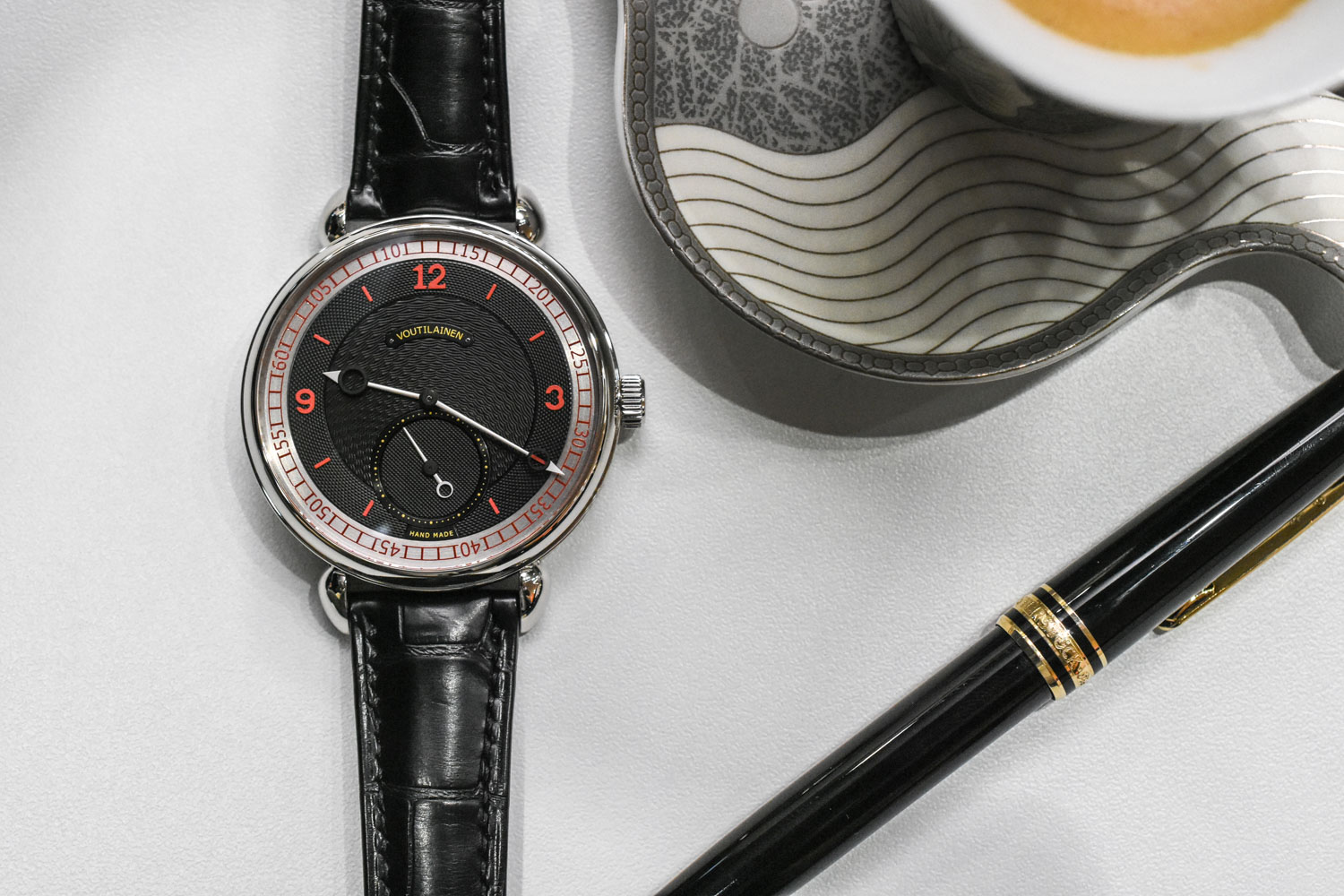
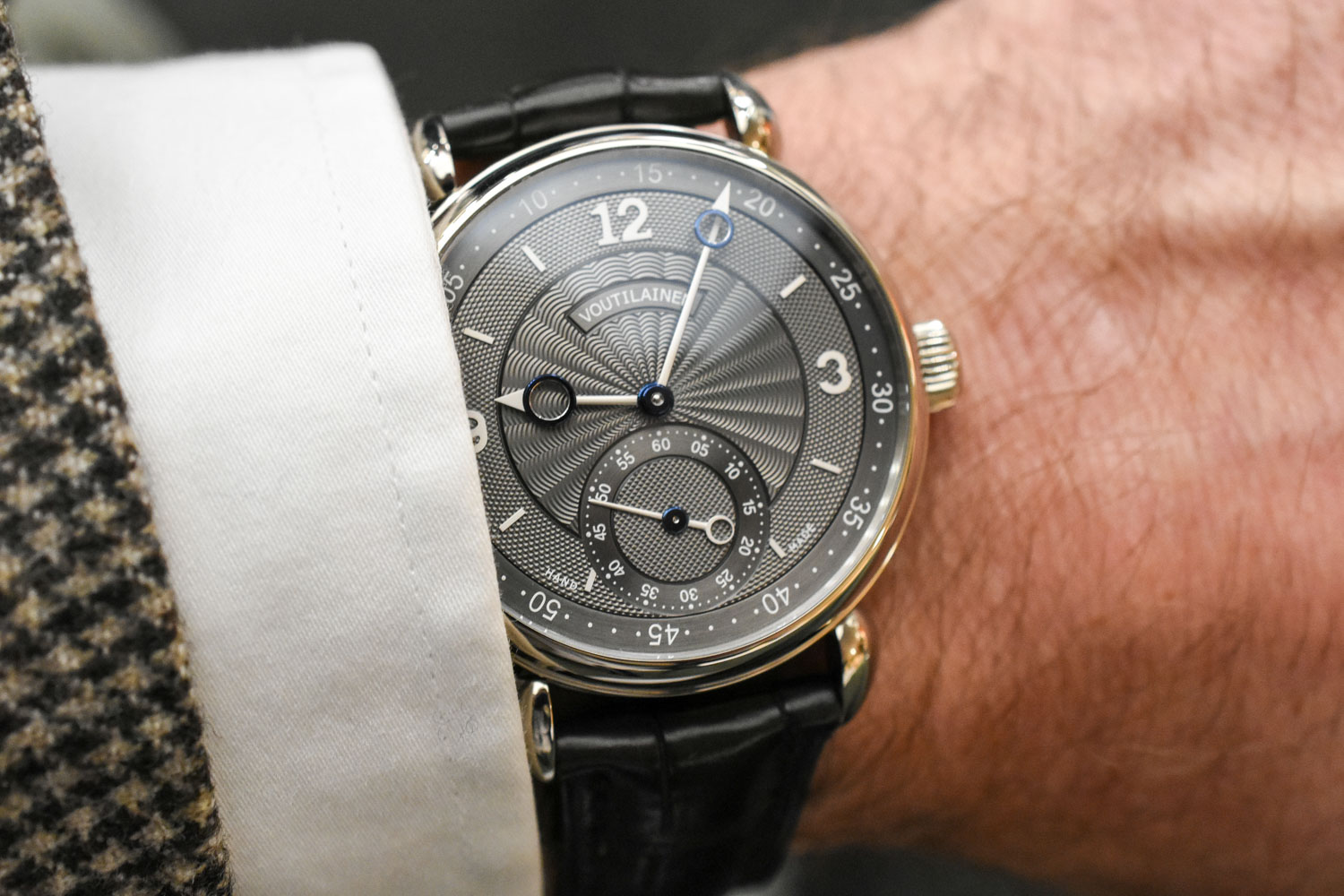
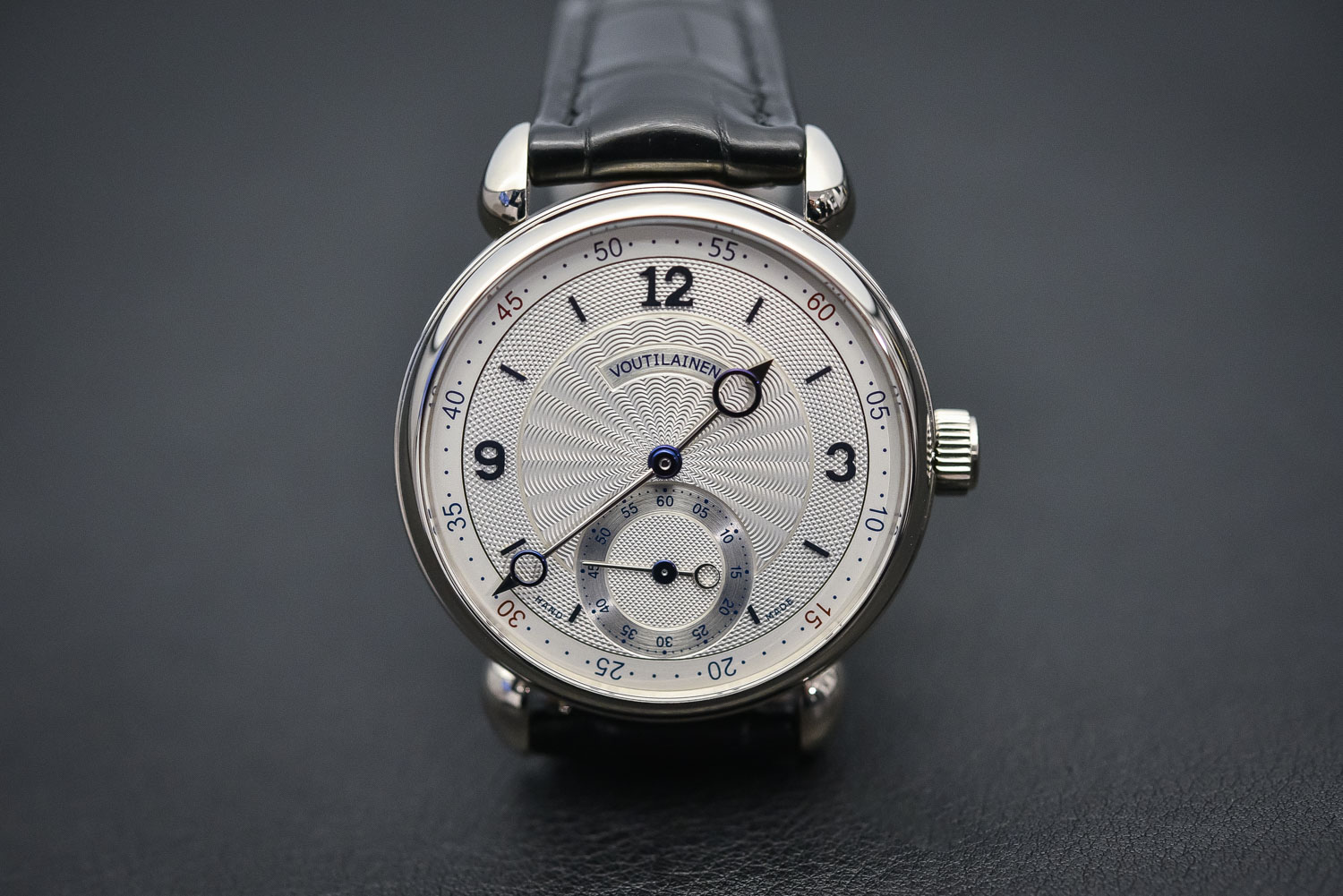
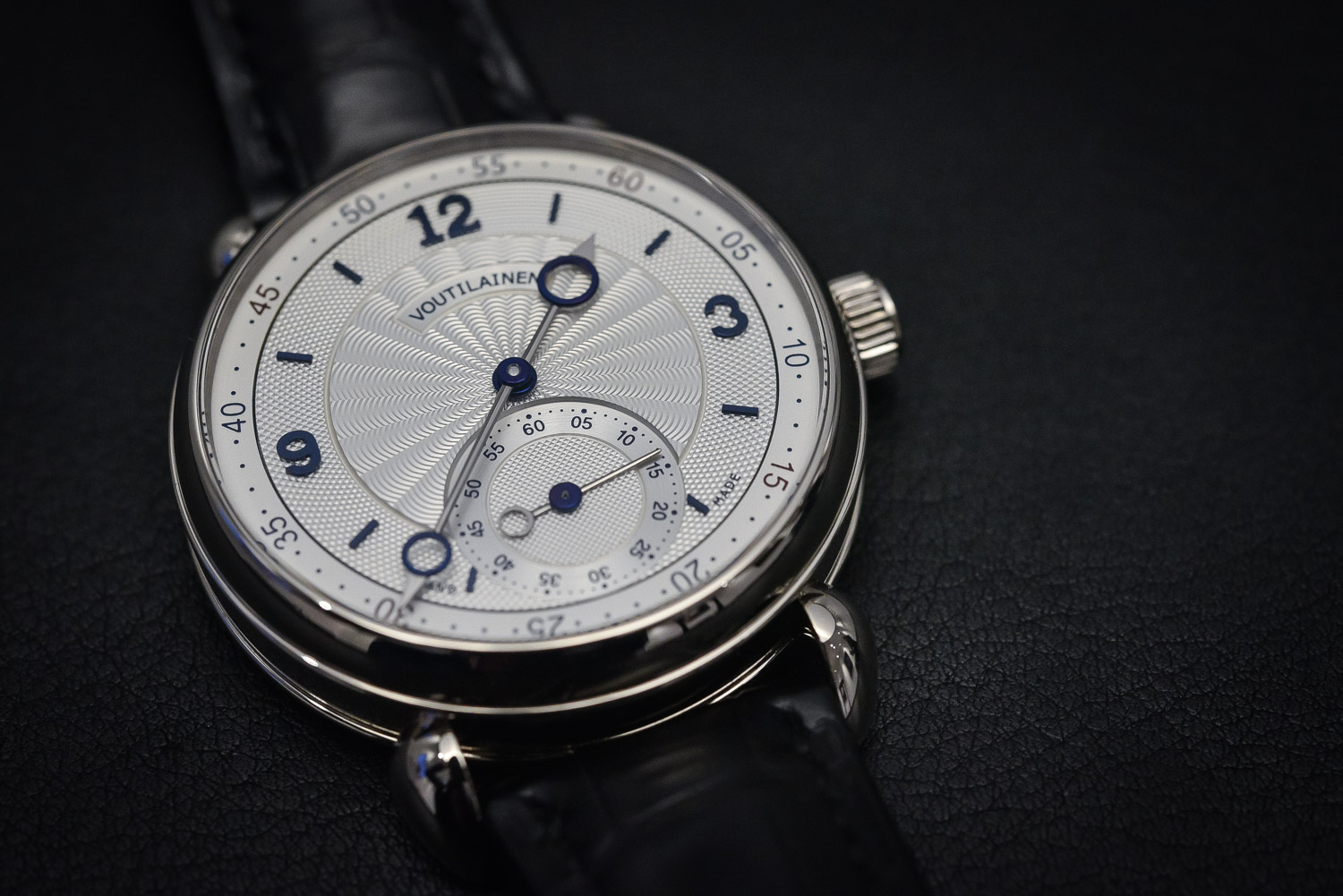
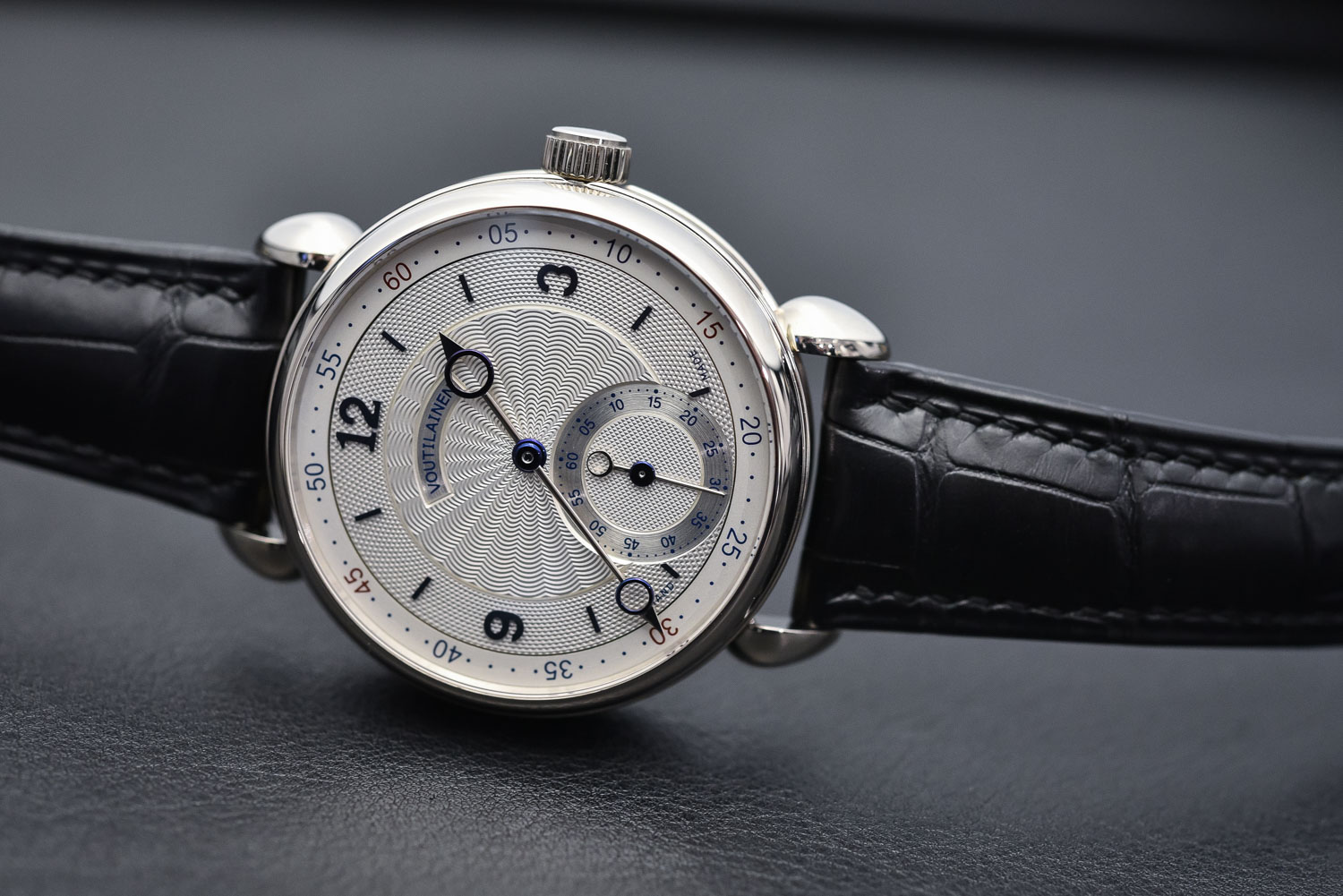
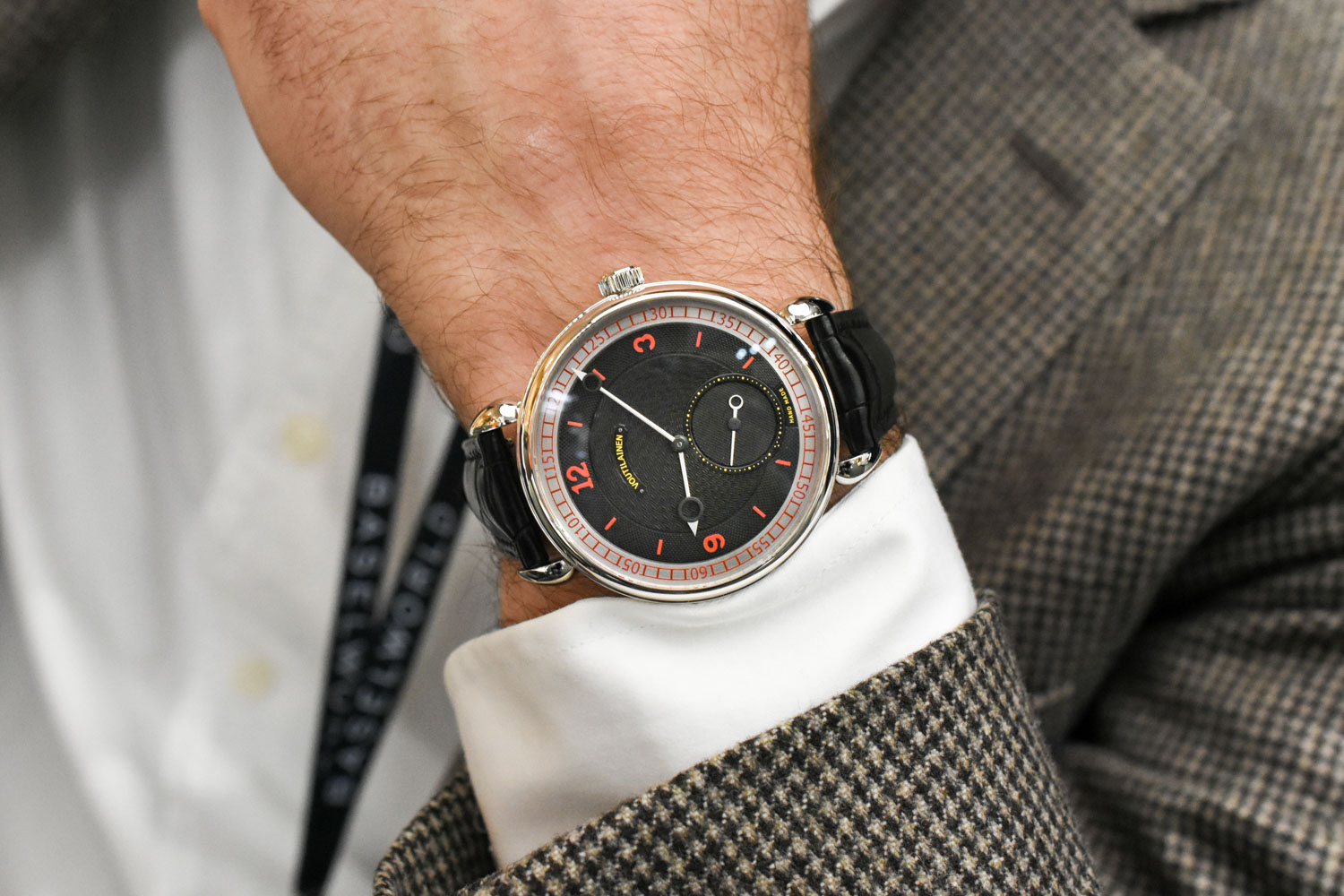
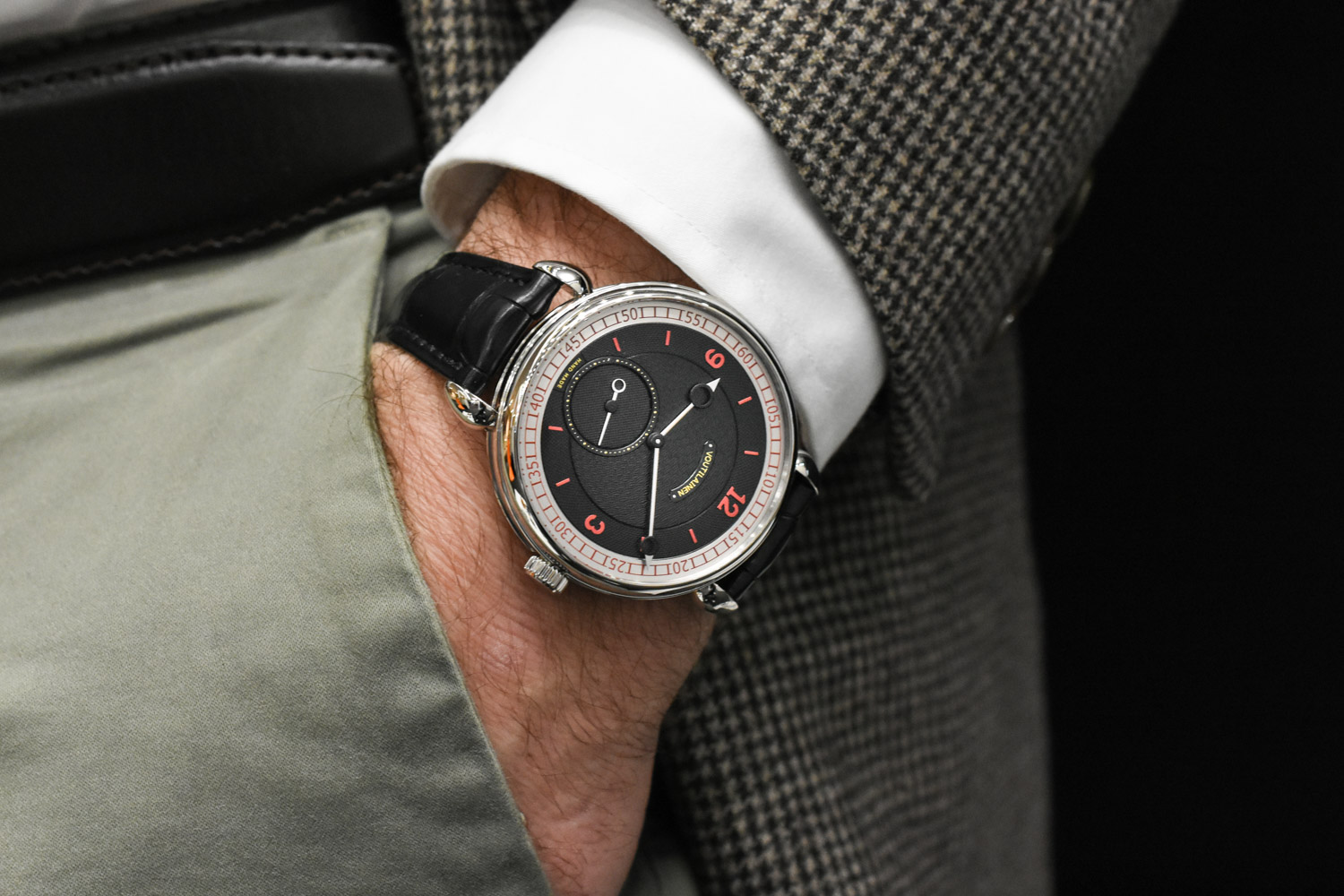
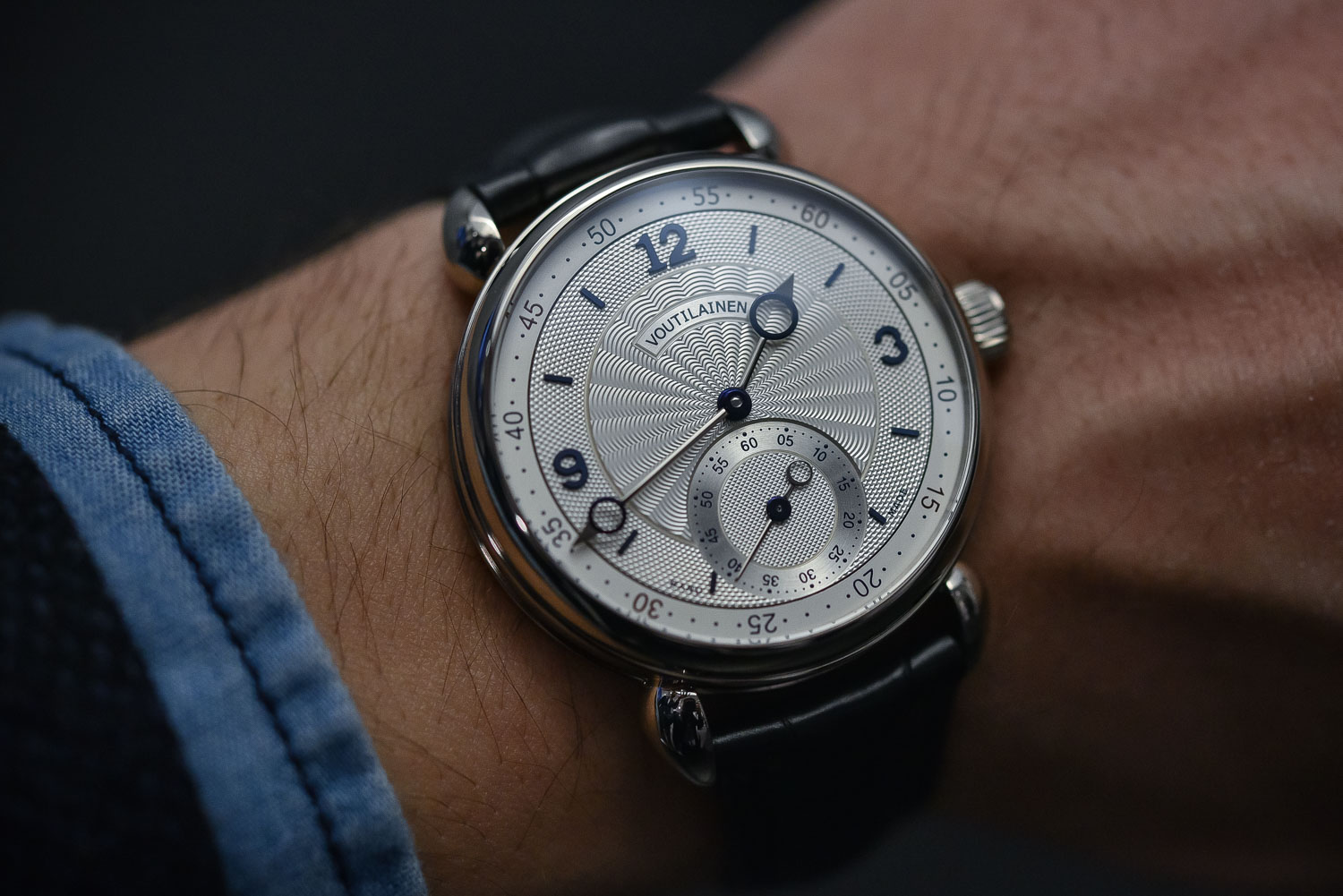
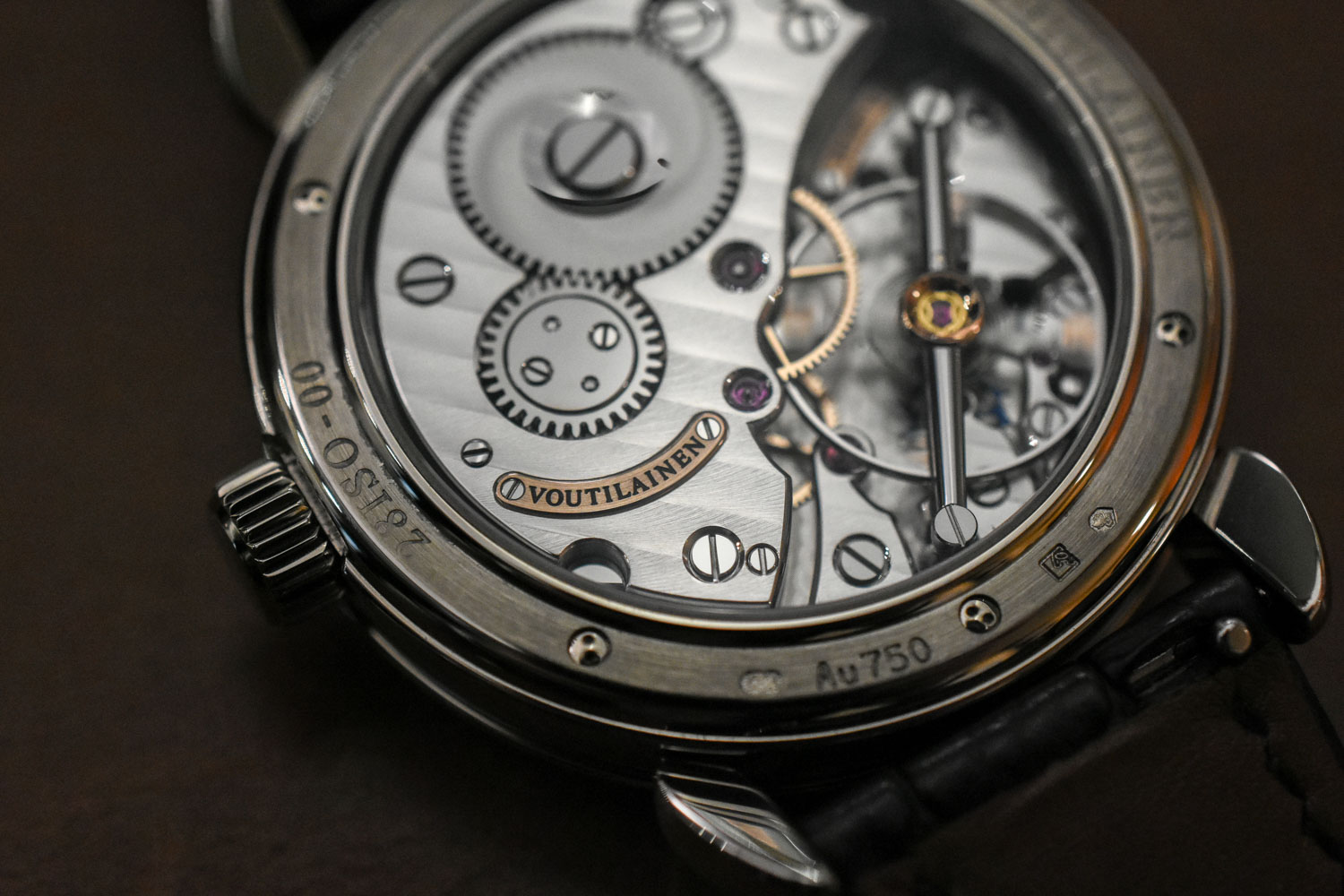
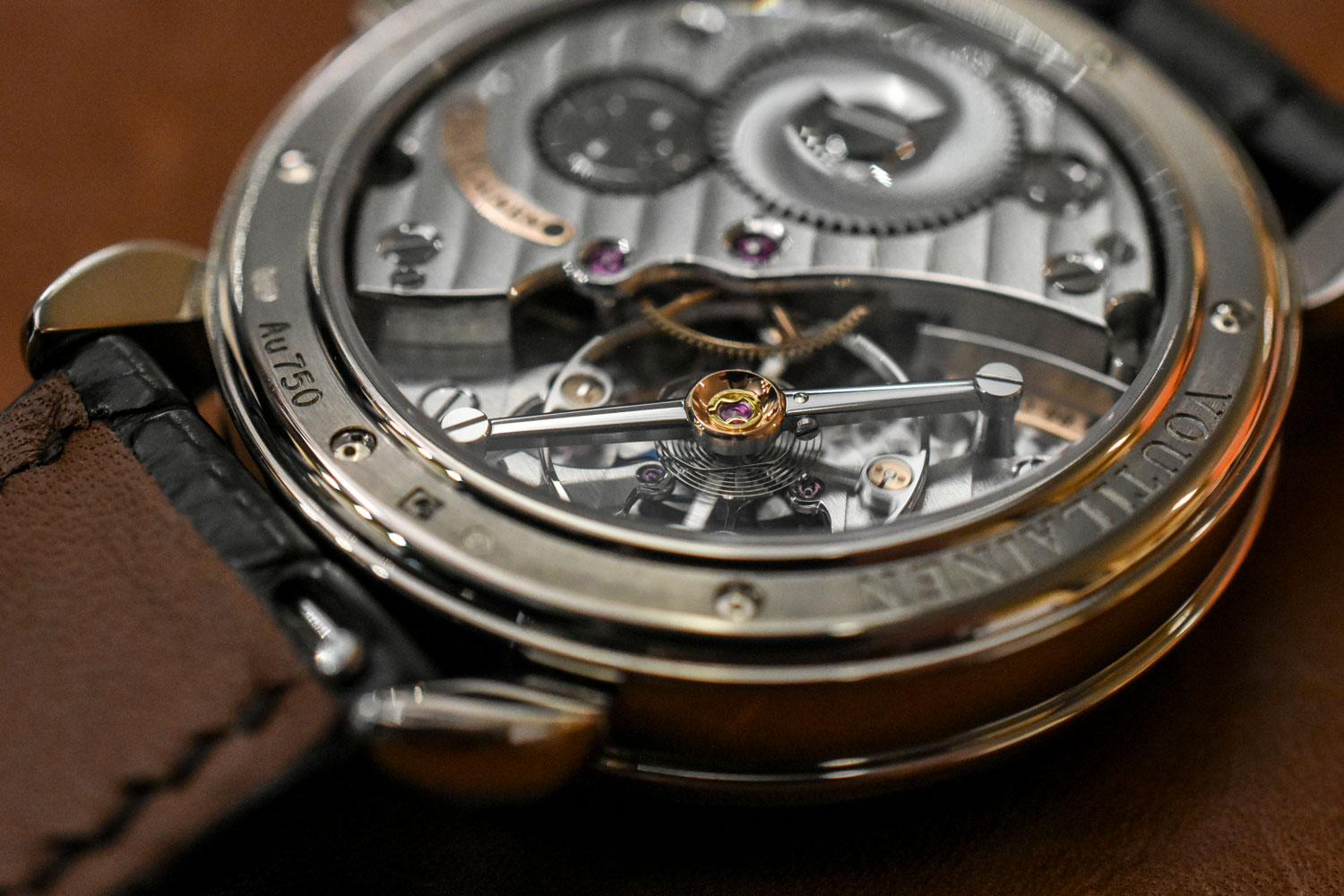
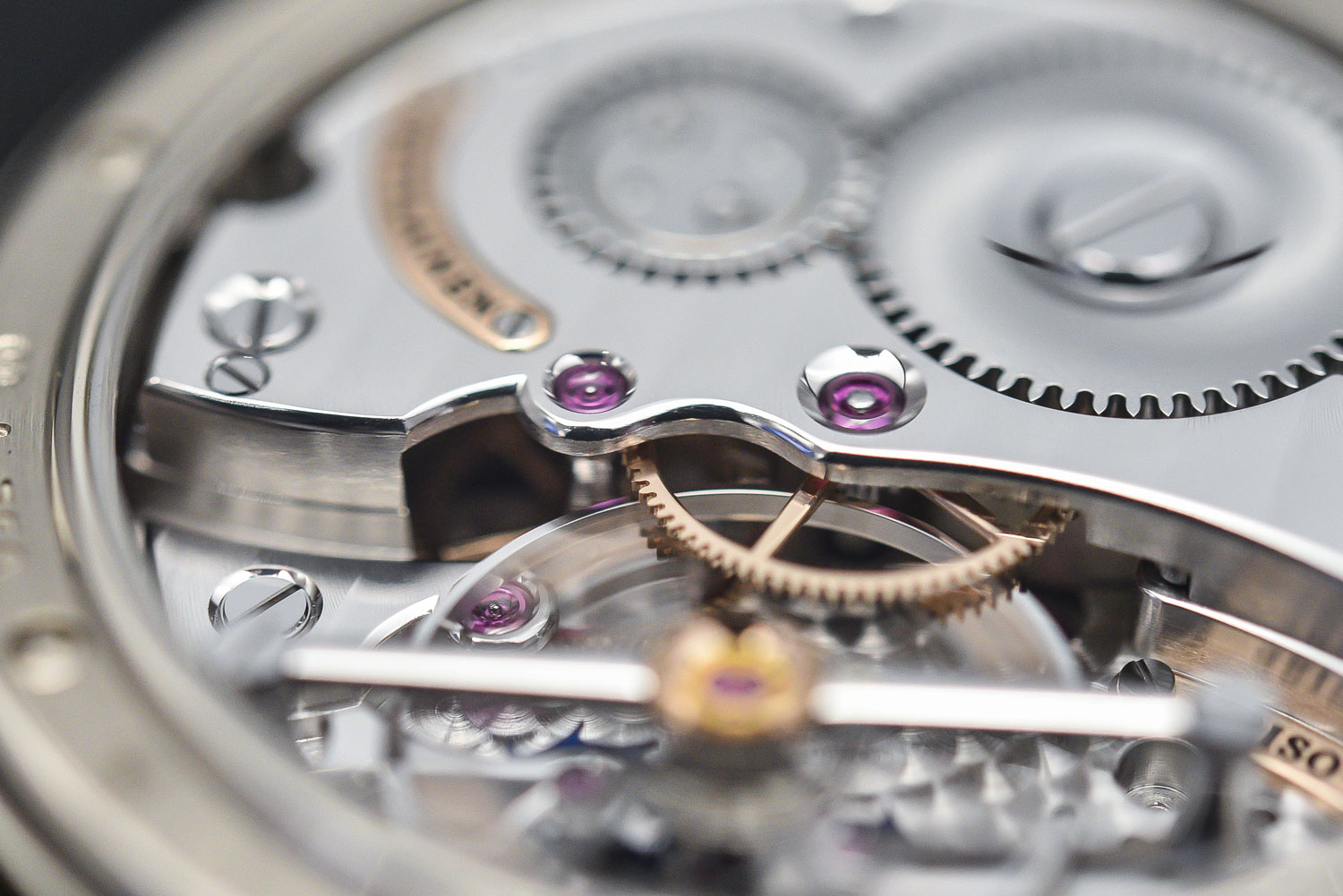

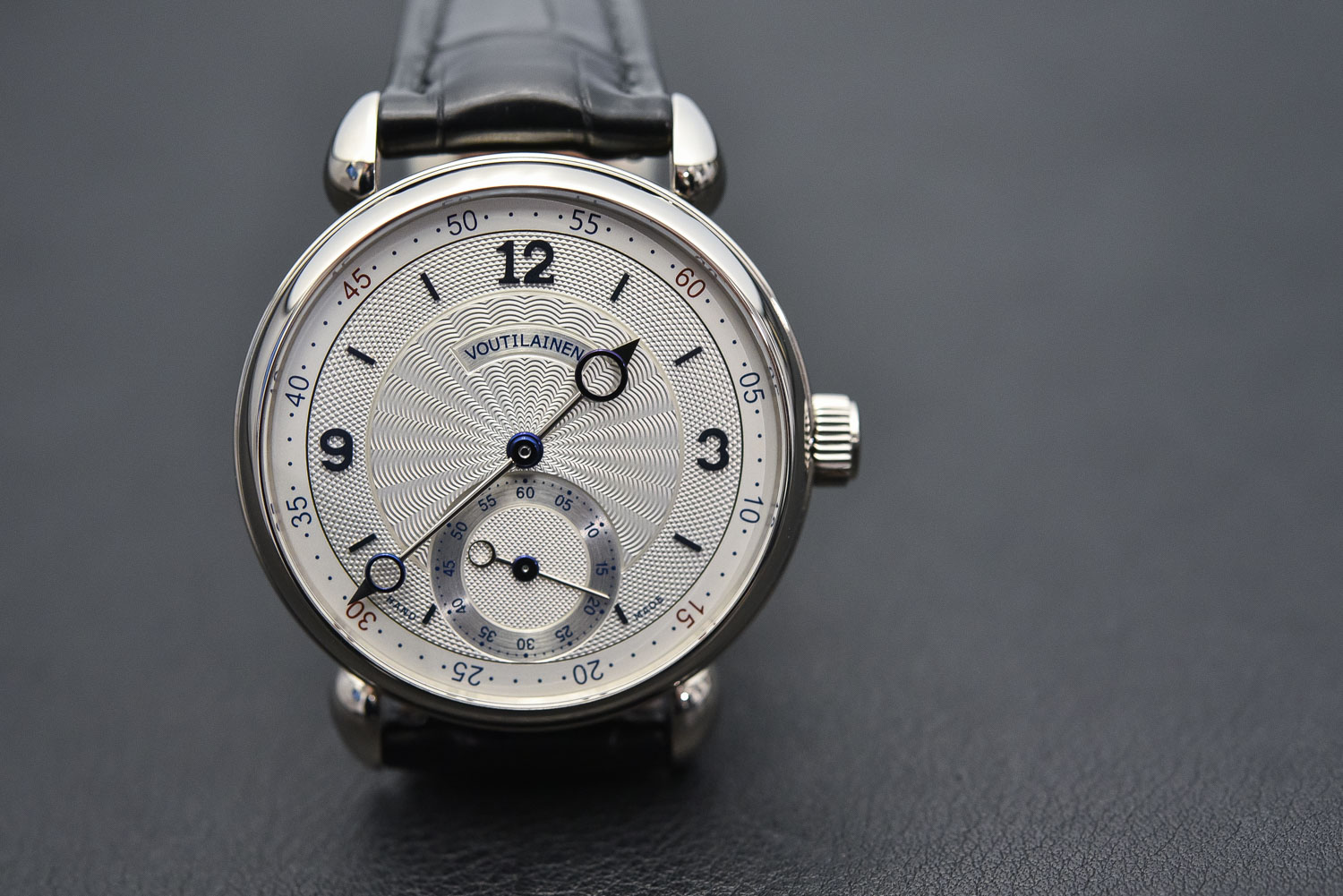
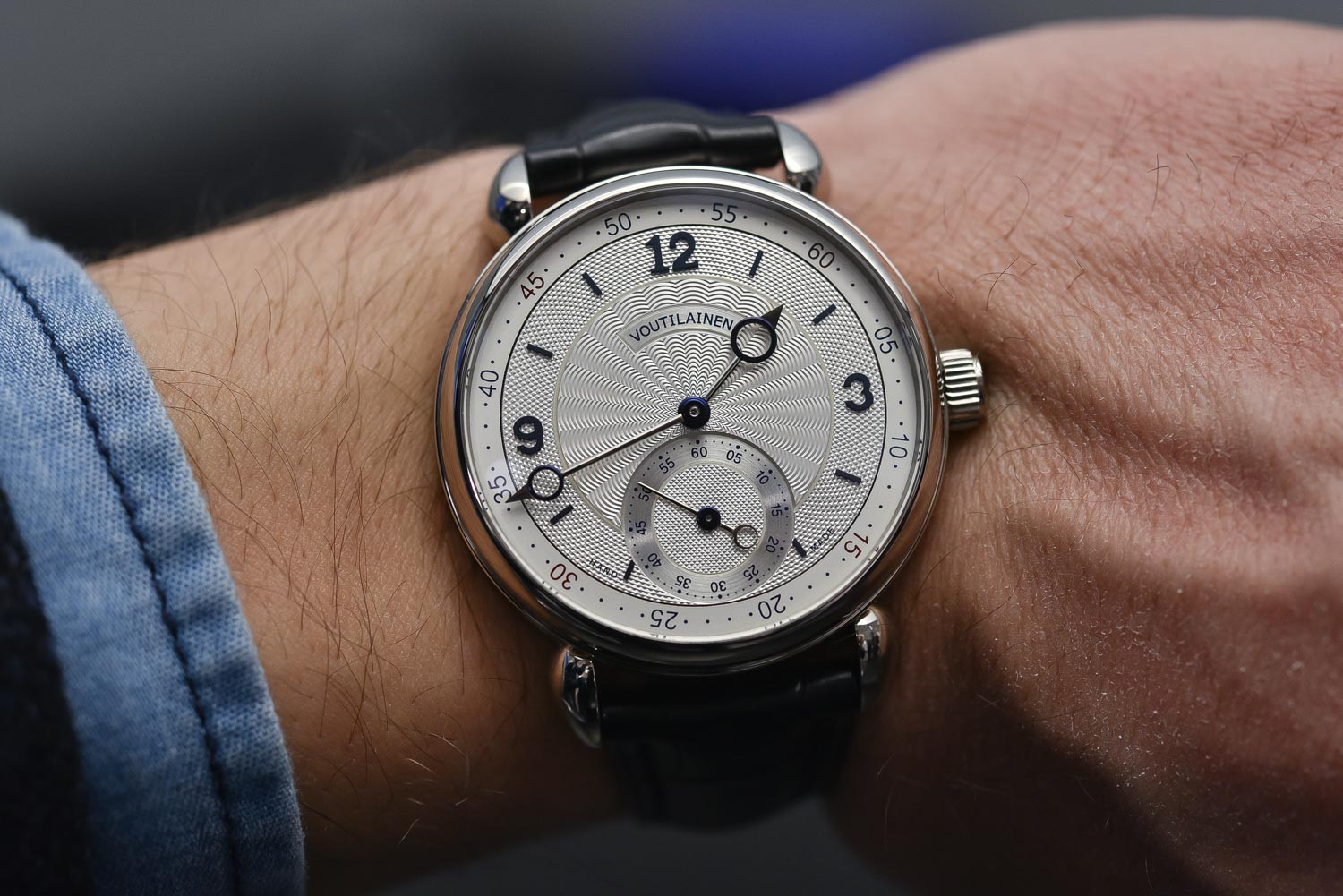
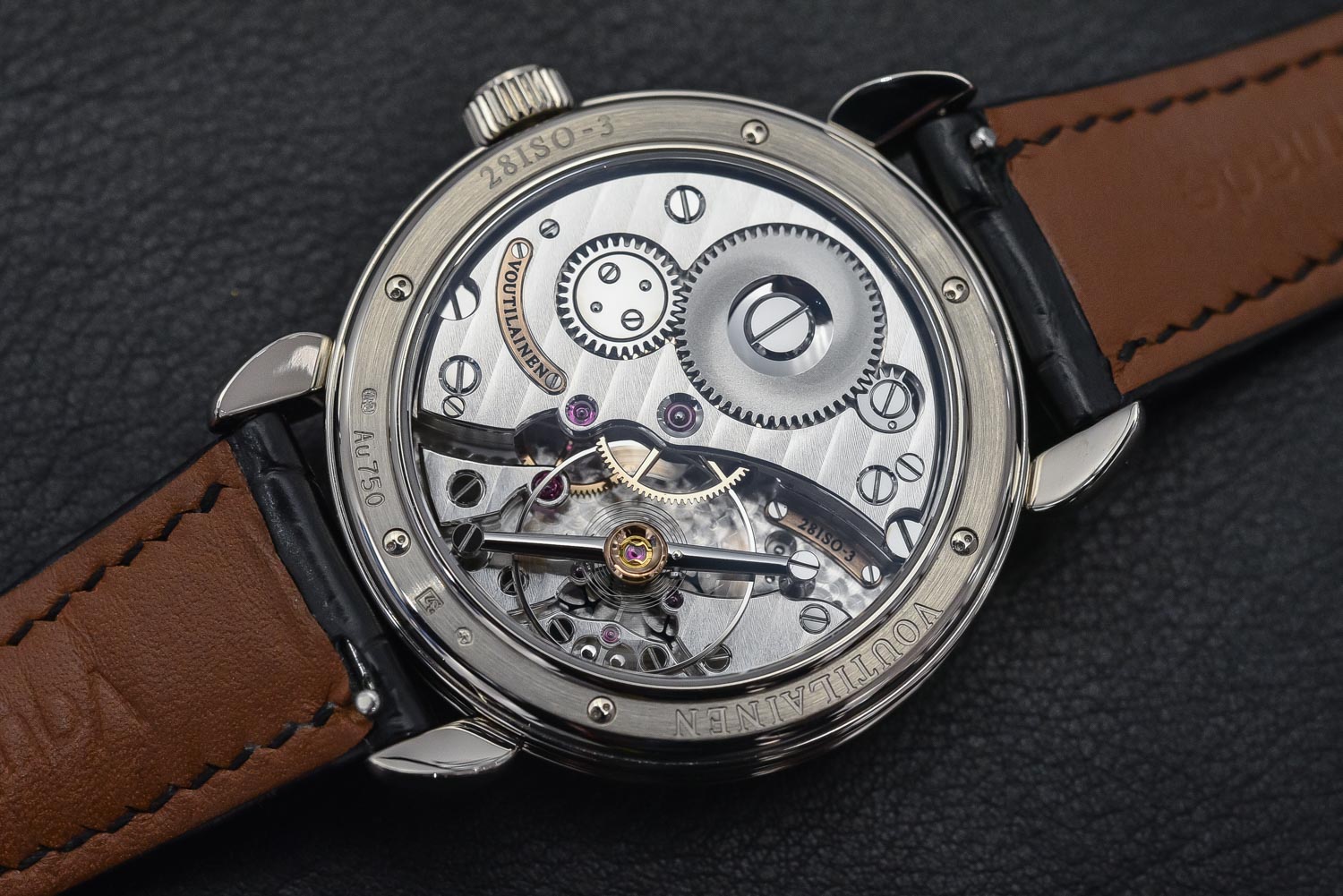
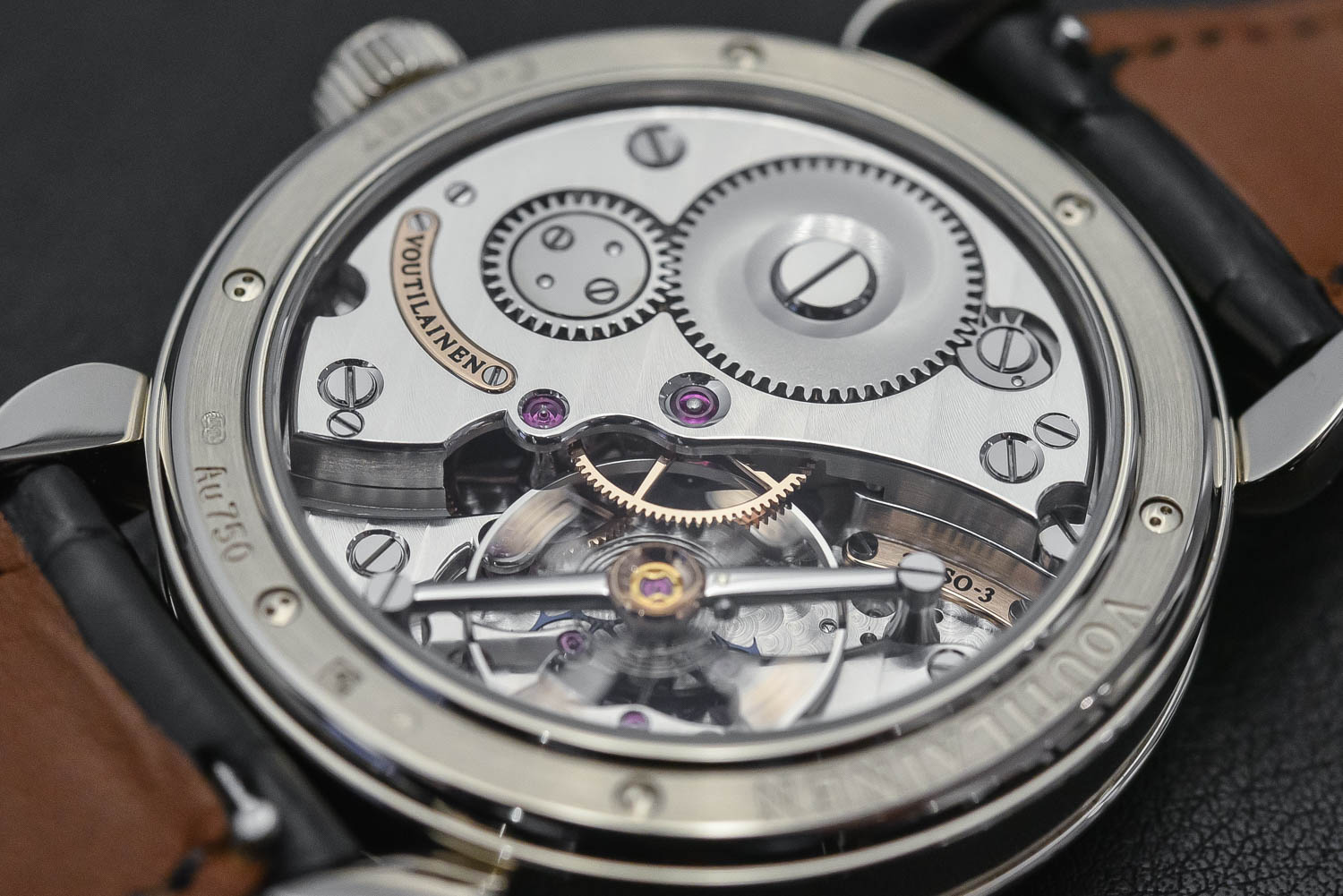
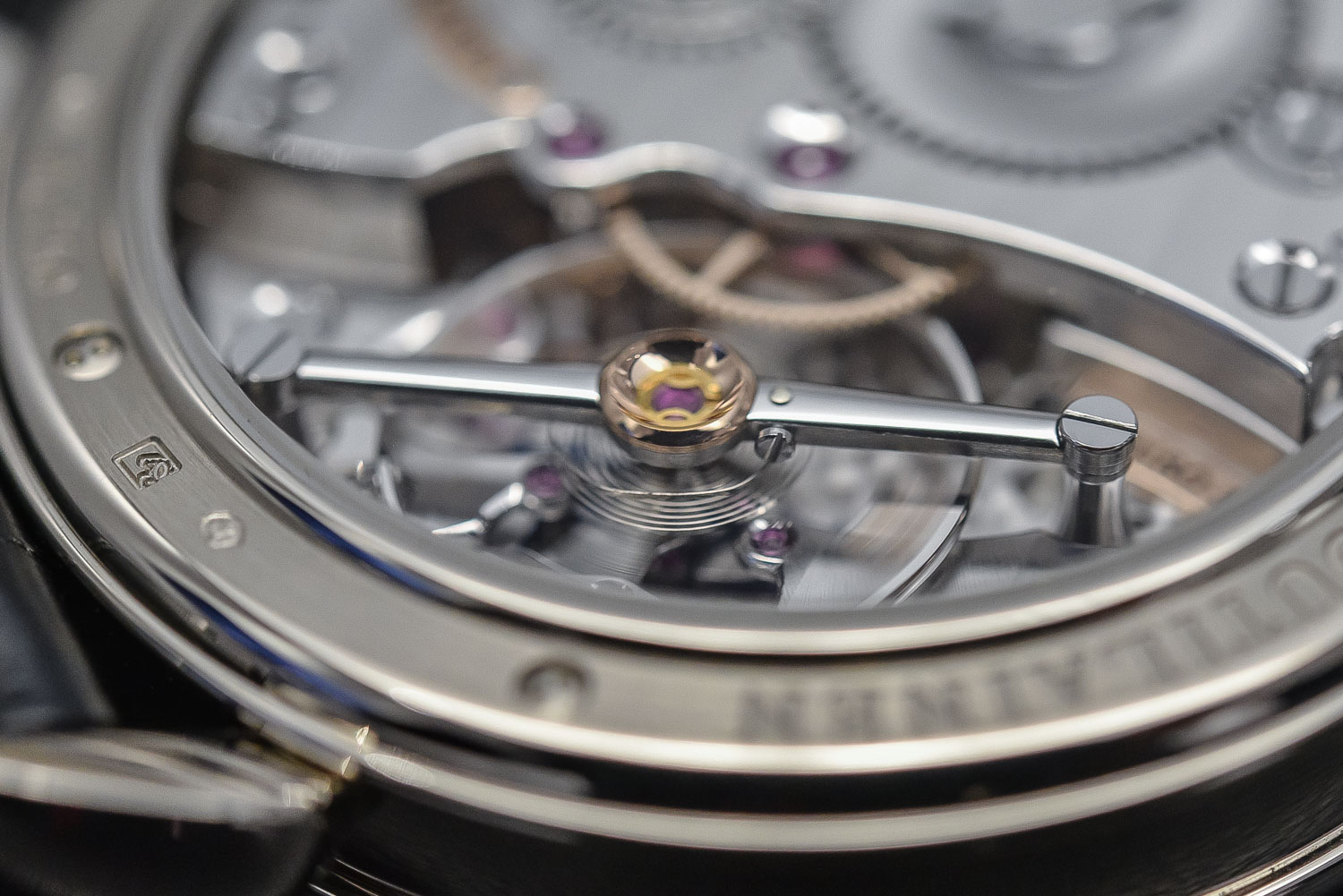



5 responses
Hmmmm. It looks like 1:31, not 2:31, or am I missing something about reading the hour hand?
You’re absolutely right, Mark! My bad… guess I stared way too long at that lovely dial
This watch is perfect for people who actually have more time to read the time 🙂
I think like most people, when digital watches came along I got one. It didn’t take long to realise that you actually have to read the time on them , a glance is not sufficient. I quickly changed back to an analogue automatic watch . So this watch although beautifully made is an analogue watch doing the job my old LCD Casio did. Gives you something to think about.
Lovely watch, but reminds me of all 24 hour dials: defeats the sublime ease of the analog system and ultimately annoying enough to leave in the drawer in preference to other equally lovely ones that give you the time rather than have to work at it. If it were your only watch, then it would perhaps become the new normal, but that is hardly likely given the cost and target audience. Still, applause for true innovation in a small field where that is difficult.